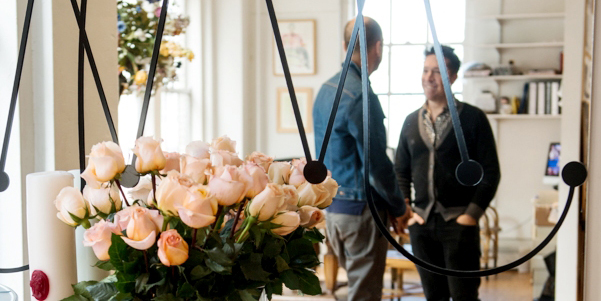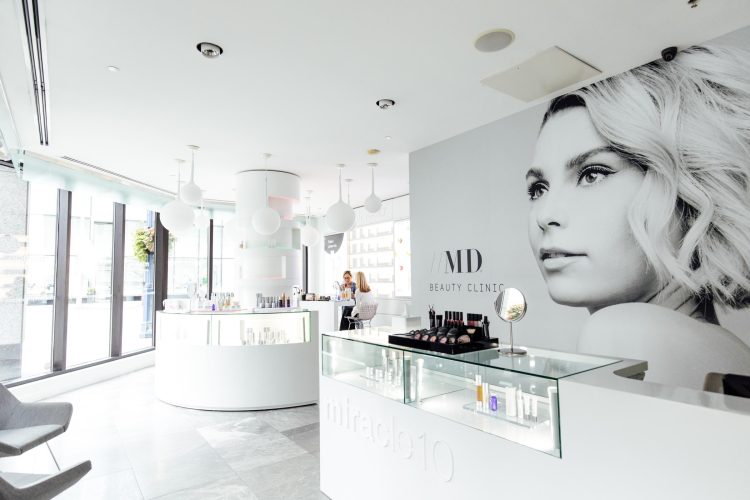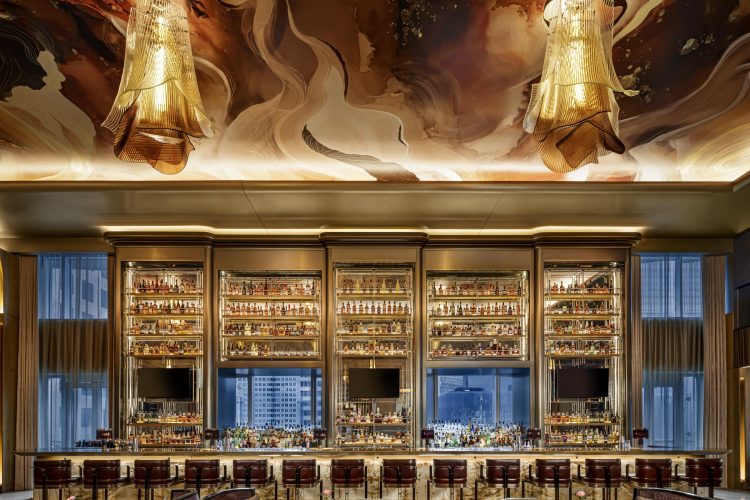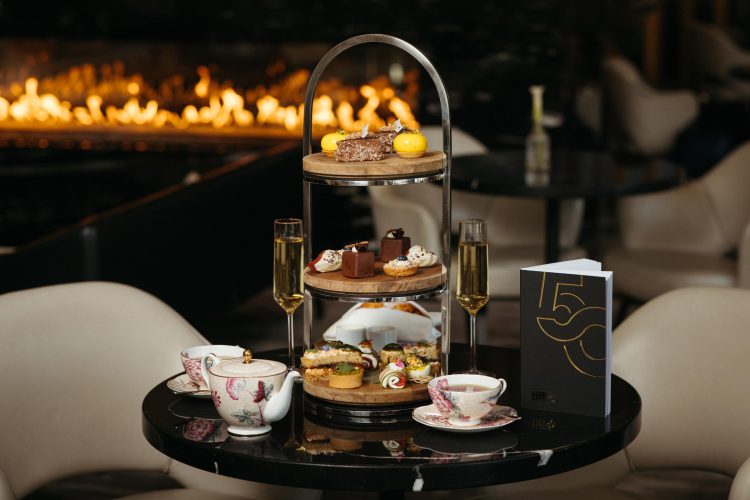By Hannah Yakobi
Photography by Kareen Mallon
Ben Barry was in Grade 9, in his hometown Ottawa, when he decided to do something that he still refers to as a “crazy idea.” One of his friends had taken a modeling course, which cost her close to $3,000. However, when she was ready to model, the agency said she needed to go from size 12 to size four. One night, over dinner, she shared the story with Barry and he decided to help her. He snapped a few photos and sent them off to Ottawa Magazine.
Shortly afterwards, the fashion editor called: “We have received your pictures and we think this model is perfect for our back-to-school photoshoot. We just have one question—are you her agent?” Barry didn’t know what to say, so he said “yes.” Another question followed: “We need to send you a contract, do you have a fax number?” Barry covered the receiver of the phone and yelled up to his Mom, who gave him the fax number to her office. The last question was: “We’ve never worked with you before, so what is the name of your agency?” Barry said it was Ben Barry Agency. And he’s never looked back since then.
In the last 16 years, Barry won Queen’s Golden Jubilee Medal and was the first male recipient of the Governor General’s Awards in Commemoration of the Persons Case. Maclean’s named him “one of twenty-five leaders of tomorrow.” He’s been featured in the Wall Street Journal, The Financial Times, CNN and Oprah. He runs his own agency, which is still called Ben Barry Agency, and he is an Assistant Professor of Equity, Inclusivity and Diversity at Ryerson University’s School of Fashion in Toronto. So how did that one phone call change his life? Find out in our Exclusive interview below.
HANNAH YAKOBI: So what happened after that fated conversation with the editor?
BEN BARRY: My friend got a job, she got paid and I got a commission cheque. And then she said to me: ‘Ben, I don’t have to lose any more weight, I don’t have to spend any more money, you already got me one job—can you get me more?’ I thought the first one wasn’t hard so I figured—sure. I kind of took her on, set up a desk in the basement of my family’s home and started my agency. And then she sent some of her friends to me. I started my business for fun. This was in 1997.
Did you know the exact direction you wanted to take from the beginning?
Back then, I thought anyone who wanted to model could model. If you had the personality, the presence and the charisma to really capture the audience when you were on the runway or in front of the camera, I would sign you. But I realized I didn’t know much about the industry and I had to learn more, so I ended up taking a trip to Toronto. A year later, during spring March break, I went to visit different agencies. Most of them were happy to meet with me, but when they saw I was 15, they kind of smiled. The only agent who wasn’t surprised at all was Elmer Olsen.
He was really wonderful, thought it was great I started my agency, showed me images of the models he represented, took time to look at the models I represented and said he would love to work with me.
I learned that to model you had to be 5’10” or 5’9”, quite slim. You could start at 13, and, primarily, you had to be Caucasian. There were some very strict guidelines and this was all new to me, but I thought if this is what the top agency was telling me I had to follow it. I didn’t want to give the people I represented false hope, I didn’t want to tell them that I could get them a job if that wasn’t what the industry wanted.
I went back to Ottawa and let go of a lot of models. I felt awful. My models got a lot of placements through Elmer, we made contacts in New York, Europe and Toronto. It was really great but, of course, I was still in high school.
So what was the turning point after that?
One of my models got the cover of Fashion Magazine in 1999. I brought the magazine to school and showed it to my friends. They all said: ‘Ben, this is awesome! Congratulations, this is a great cover.’ But very slowly, as they flipped through the pages, I noticed their comments started to change. Many of them would say something like, ‘This model is very beautiful, but there’s no way I could wear that skirt. It would make my legs look huge.’ I started to see that my friends were comparing themselves to the model even though they didn’t know anything about her. They were often putting themselves down because they didn’t look like her.
Their reaction was pretty unanimous: most people thought the images were beautiful, but they didn’t relate to them and it often made them feel bad. That wasn’t my goal in the industry: I wanted to do something that was creative, fun and empowering. I certainly didn’t want to hurt anyone’s self-esteem.
I decided that maybe I should go back to what I was originally doing. And that’s when I decided to represent models of all sizes, all ages—the people who I thought had the personality and the charisma to be successful, the people who looked like my friends and my family. Of course, people in the industry in Toronto thought I was crazy. They thought this isn’t the way fashion worked. But I decided to take that path.
You’ve taken an interesting route afterwards too, as you entered the academic world. How did that start?
I certainly never thought I would go into graduate school or get a PhD; I came to Toronto to do my undergraduate degree, primarily because I wanted to move the agency here, since it was obviously a much bigger market than Ottawa. I did a program in women’s studies at the University of Toronto. That was primarily because I started off in business and it wasn’t really for me. I felt that I could learn more from women’s studies, and it ended up being the best decision I ever made.
What did you learn that really stuck with you?
It really gave me the framework to understand the media. I was running my agency and it was getting quite successful, but there was a lot of resistance. There were still people who said: we get the idea that people could see themselves in models, but we don’t actually think this is going to increase purchase intentions.
Fashion is supposed to sell an aspiration, this ideal, this fantasy that people buy into. No one wants to actually see someone who looks like them.
But there really was no research on the topic. So after my fourth year, I decided to go to graduate school. I was going to do research and look at how women change their purchasing behavior for fashion when they see models of different sizes, different ages, different ethnicities. That became a six-year project and moved into my PhD study, which was a sample of about 3,000 women, between the ages of 14 and 65 who looked at series of mock advertisements. I examined how those ads affected their purchasing behaviour.
What did you find?
I found that, primarily, women in North America do increase purchases when they see a model who looks like them. When you saw someone who was a similar size, similar age, similar race, there was a 175 per cent increase in sales.
I did a survey with these ads and then focus groups. One of the most interesting findings was that the aspiration was the artistry and the creativity embedded in the image. It was the clothes, hair, make-up, styling—all of that creative talent. That’s what made an image aspirational. They wanted to see someone who they could relate to so they could picture that outfit on themselves. But they didn’t want to see a snapshot, they wanted to see an image that evoked fantasy.
Compared to other countries, where do you think Canada stands in terms of model diversity?
It’s interesting—if you look at models from Canada who are really successful, they are models from all backgrounds. I think that’s because Canada gives them a chance.
In terms of the fashion cities, Toronto, in particular, has a huge business advantage that we haven’t harnessed yet. I think the motto for this city is diversity. If fashion harnesses that diversity, not just in the models but in allowing designers to tap into their own cultures, Toronto could really leverage its competitive advantage.
We lose when we simply try to copy one of the big four—New York, Paris, Milan or London—and try to follow suit with what they are doing. We’re never going to be at that level because we are not trying to differentiate our brand. I think the major challenge for Toronto is to find its own fashion identity, but I think the opportunity is that we have it—and that is diversity.
Who are your favourite Canadian designers?
Sunny Fong of VAWK, without a question. But I respect all of our Canadian designers. I am definitely biased towards Sunny though—I think he really has an incredible aesthetic and he’s able to execute that in a very remarkable. He always features diversity on the runway and has been one of the few designers who has been consistent with that.
I’m a huge fan of Wayne Clark and Brian Bailey. I think they really paved the way for a lot of designers. Wayne, who is our designer resident at Ryerson, has been with us for 42 years. He’s one of the few designers who has really built a financially successful business. As an industry, we have a lot to learn from him. Wayne really sets the model and he’s also a super nice guy. Brian has also built a very successful business, but he’s one of the few Canadian designers to really embrace plus sizes.
The great thing about Canada is that we have a lot of other iconic fashion designers like Linda Lundström, and then we have a lot of emerging ones.
I’m a huge fan of all the designers who take part in New Labels competition at TFI. I think it’s a great competition and I hope there are more competitions like that. The finalists and winners of like Sid [Neigum] and Sarah [Stevenson] are unbelievably talented. Sid has a huge future ahead of him—I’m a huge fan of his work.
You love a lot of Canadian fashion designers, but how would you describe your personal sense of style?
I think in our industry, you’re so focused on everyone else’s style that you don’t think about yourself. (laughs) I probably have two different styles. When I lecture—I dress up. I teach one of our first-year courses, called Fashion Theory, which has 225 students. So I definitely feel when I give a lecture in that sense that it’s like a performance—you have to dress up and look the part.
For day-to-day, I’m pretty casual but I like experimenting with fashion. I think there is a lot of power in fashion because it can change how you feel about yourself inside. If you like what you wear, if you think you look good, you’re going to have a better day and you’re going to feel more confident.
You teach a lot of students. If there is one piece of wisdom that you would want to impart on them, what would it be?
If you’re going to succeed in business, it’s about coming up with an idea that everyone else thinks is crazy. If you have an idea and everyone around you says: ‘No that’s ridiculous, that’ll never work, this industry doesn’t work that way,’ then you know you might be onto something. That’s innovation.
It’s often the biggest challenge, because you have to fight that status quo, overcome it and let your idea take force. I think the biggest message I share with students is that you have to do something different. Fashion is a very saturated market. There are lots of labels, there is limited “shelf space,” so to speak. What are you going to do that’s different? How are you going to stand out?
Is there anything else you would like to add?
Fashion is very exciting, but so often we take a safe route. We have new collections that come down the runway every season, but we have the exact same type of model. We often have the exact same type of presentation too.
I question whether the fashion show is a dated marketing tool and I really hope Toronto can embrace what’s new, and lead the way both in diversity and also in new ways of presenting fashion.














Yesterday, while I was att work, my cousin stole my iphone and
tested to see iif it can survive a forty foot drop, just so she can be a youtube sensation.
My iPad is now destryed and she haas 83 views. I know this is entirely off topic but I had to
share it with someone!
[…] Canada, who I met when I guest lectured to his class in Toronto. He has long been a campaigner and founded the first model agency dedicated to diversity, working on the celebrated Dove campaign. He is determined that the fashion and beauty industry […]
Hi Ben,
I’m a very mature model and actor.
My friend’s Mother saw Maye Musk in an ad and told my friend she saw me in the ad. He and others think I look similar to Maye.
I model and act with Fulcher Agency in Toronto. Clarissa (model agent)only does print in Modeling. I sent her cell phone photos, to see if I should get more professional shots for cosmetics &c. She said she doesn’t do that.
One week ago I had a role in a short film. I still work. Did a role in a docudrama about 3 weeks ago.
I am in great shape as I take part in pool aquatics at least 4 days a week.
Look me up on Castingworkbook.
Please give me permission to send you some cell phone photos.
I’m looking for representation for my high cheek-bone look.
I would be lovely to hear from you,
Elizabeth